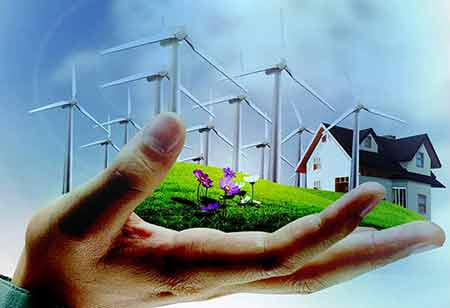Thank you for Subscribing to Energy Business Review Weekly Brief
Benefits of Using Biomass Energy
Biomass energy has the benefit of being a renewable source of energy that cannot be deleted.

By
Energy Business Review | Friday, July 29, 2022
Stay ahead of the industry with exclusive feature stories on the top companies, expert insights and the latest news delivered straight to your inbox. Subscribe today.
The US exported total biomass energy than it was imported last year, based on energy content.
FREMONT, CA: Biomass is organic material that is renewable and derived from plants and animals. Until the mid-1800s, biomass constituted the largest contributor to the annual energy consumption of the United States. Biomass is an essential fuel source in many nations, particularly for cooking and heating in underdeveloped countries. As a method of minimizing carbon dioxide emissions from fossil fuels, biomass fuels for transportation and energy generation is growing in many developed nations.
Biomass energy has the benefit of being a renewable source of energy that cannot be deleted. Since biomass is mainly derived from plants, it will be available as a renewable energy source as long as plants continue to exist on Earth.
Biomass mitigates climate change by reducing greenhouse gas emissions: Biomass minimizes the amount of greenhouse gases that exacerbate global warming and climate change. Compared to fossil fuels, biomass emits far less carbon dioxide. The primary difference between biomass and fossil fuels in terms of carbon emissions is that all the CO2 plants take during their growth is released back into the atmosphere during biomass energy production. In contrast, CO2 from fossil fuels is released into the atmosphere, which increases the greenhouse effect.
Cleaner environment: Biomass energy contributes to environmental preservation. As the global population increases, so does the amount of waste that must be appropriately disposed of. A significant amount of trash winds up in water supplies, causing harm to ecosystems and having detrimental effects on human health. This waste might be valorized and used to create electricity, biofertilizers, and other products.
Biomass is a reliable electrical source: In many cases, biomass energy facilities are dispatchable, meaning they may be easily activated or deactivated. This permits grid operators to utilize power from these facilities during periods of high demand.
In contrast to other renewable energy sources such as solar and wind, bioenergy is neither intermittent nor variable: the sun does not always shine, and the wind does not always blow. In the lack of storage solutions, solar and wind energy cannot always be utilized when needed. Unlike the availability of some biomass resources, which may be affected by seasonality, biomass energy facilities can always provide electricity, regardless of the weather.
Biomass aids in waste reduction: Landfills have many detrimental environmental effects, including contamination of neighboring air, soil, and water and emission of greenhouse gases.
Counting on how these materials are handled, they can contaminate our land, air, and water, leading to adverse environmental and human health effects.
Furthermore, landfills are a significant source of greenhouse gas emissions in the atmosphere. Decomposition of organic matter in landfills releases methane, one of the most potent greenhouse gases, and carbon dioxide and other chemicals.
Not only does diverting garbage to biomass energy plants instead of landfills help lower the size of landfills and mitigate these dangers, but it also makes productive use of materials that would otherwise be discarded.






